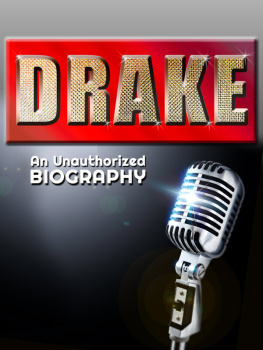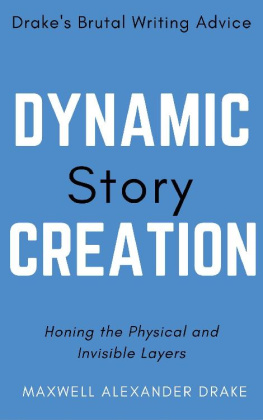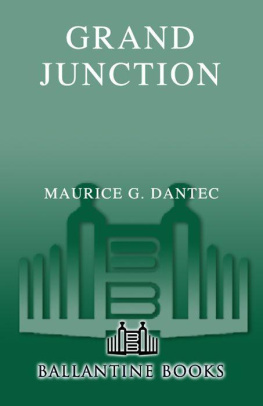DRAKES
ROAD BOOK
OF THE
GRAND JUNCTION RAILWAY
FROM
BIRMINGHAM TO LIVERPOOL AND MANCHESTER,
ILLUSTRATED BY AN
ACCURATE MAP, AND NUMEROUS ENGRAVINGS:
To which is appended
THE VISITERS GUIDE
TO
BIRMINGHAM, LIVERPOOL, AND MANCHESTER.
TO THE
CHAIRMAN AND DIRECTORS
OF THE
GRAND JUNCTION RAILWAY COMPANY,
THIS
Second Edition
OF
THE ROAD BOOK,
IS,
BY PERMISSION, RESPECTFULLY INSCRIBED,
BY THE
AUTHOR AND PUBLISHER.
ADVERTISEMENT
TO THE
SECOND EDITION.
The courteous reception given to the First Edition of the Grand Junction Road Book, and the substantial proofs of approbation which a rapid sale has afforded, render it a duty as proper as it is pleasant, for the Author and Publisher to return their joint thanks for the liberal patronage already bestowed on their work; and to engage a continuance of the same, by their assurances that in the present edition every possible improvement has been carefully effected in its various departments. Spirited wood and steel engravings of the most important spots on the line have been introduced, and much new and interesting matter supplied. The whole of the information concerning fares, regulations, stations, and accommodation in towns on the route, has been recast, corrected, and enlarged; and a brief but comprehensive directory added, under the head of Visiters Guide , page 97, containing lists of public buildings; institutions of all kinds; places of worship of all denominations, with names of the officiating ministers; principal show rooms and manufactories; times of arrival and departure of mails at the post office; hackney coach fares; bankers, inns, boarding houses, omnibus offices, newspapers, canal conveyances, waggon warehouses, packets, &c., &c., for Birmingham, Manchester, and Liverpool. The exceeding utility of this new division of the volume will be obvious to every one. The Map has also been revised, and greatly improved; and the Grand Junction Road Book again makes its bow to the public, in full expectation that its old fame and new merits will be rightly appreciated.
Birmingham, September 1, 1838.
SONNET
BY WORDSWORTH,
ON
STEAM BOATS, VIADUCTS, AND RAILWAYS.
Motions and means, on land and sea at war
With old poetic feeling; not for this,
Shall ye, by Poets even, be judged amiss!
Nor shall your presence, howsoeer it mar
The loveliness of nature, prove a bar
To the minds gaining that prophetic sense
Of future change that point of vision, whence
May be discoverd what in soul ye are.
In spite of all that beauty may disown
In your harsh features, Nature doth embrace
Her lawful offspring in Mans art; and Time,
Pleased with your triumphs oer his brother Space,
Accepts from your bold hands the profferd crown
Of hope, and smiles on you with cheer sublime.
CHAPTER I.
BIRMINGHAM.
NAMEHISTORYMANUFACTURESPUBLIC BUILDINGS AND INSTITUTIONS, &c., &c.
Our native town of Birmingham , of whose celebrity and importance we are justly proud, demands our first attention in this our Itinerary; although the numerous publications which give more circumstantial particulars respecting it than the brief limits of the present work will admit, render it an unnecessary task here to occupy many pages with our notice.
In our after topography and history of towns on the Grand Junction line, we shall have occasion to allude to their several claims to the honours of hoar antiquity; but none it would appear can boast of more remote fame than our own brave old town of Birmingham, or, as it has been variously written, Bromycham, Bremecham, Bermyngham, and Bromnsycham, the etymology of which terms have served to puzzle the learned in such lore for years gone by, and will do for years to come. What never can be positively settled, always proves a most fascinating subject for argument. Mr. Hutton, the antiquary, imagines the derivation to be this: wich, or wick, being used to signify a town or village, and brom, from the broom growing in the vicinity. But we must leave the subject for more voluminous writers. The late Mr. Hamper, our especial antiquary, traced the orthography through no less than one hundred and forty variations. In proof of Birmingham being a place of no very recent creation, the prodigious accumulation of scoria produced by the smelting of iron, at Aston furnace, may be referred to; as also the great number of exhausted coal mines, on a large common within a few miles, called Wednesbury Old Field. Both these must have been the work of many centuries, as is proved by the fact, that in the former, the mass of scoria has not perceptibly increased within the memory of that remarkable individual, the oldest inhabitant, though constantly receiving additions. It appears that the Britons were acquainted with the use and manufacture of iron previously to the Roman conquest, as they are described with chariots armed with scythes. It requires no very great stretch of imagination to suppose Birmingham (the Bremenium of the Romans) to have been a chief station for the fabrication of such weapons. In Doomsday Book, Bermengeham is noticed; and the manor and lordship were held by the De Birmingham family and their ancestors, during the reigns from Henry I. to Henry VIII., when John Dudley, afterwards Duke of Northumberland, being in possession of Dudley, and desirous of adding to it the manor of Birmingham, contrived, by a series of villanous artifices and perjury, to wrest it from Edward de Birmingham, and add it to his own possessions. On the attainder and execution of the duke, in the reign of Mary, the manor escheated to the crown; and in 1643 a descendant of the family, through the female line, was raised to the peerage, by the title of Baron Ward, of Birmingham, changed afterwards to Viscount Dudley and Ward, and Earl of Dudley. The remains of the ancient manor house have long been removed to make way for improvements; its former name, The Moat, (now called Smithfield,) and two neglected effigies in St. Martins church, of a crusader and an ecclesiastic of the De Birmingham family, are all that remain to tell of their former greatness. Few historical events seem to have disturbed the good people of Birmingham except the civil war of the seventeenth century, when they proved themselves staunch adherents to the parliamentarians, and did good service to their partizans, against Prince Rupert and his troops, at which time some earth works thrown up at Bordesley, conferred the name of Camp Hill on a part of it. The prince afterwards set fire to the town, but obligingly desisted from further demonstration of such warm regard, on being handsomely bribed to that effect. The riots of 1791 are so frequently brought to the minds of our towns people by present allusions, that it needs not to dwell here on the disgraceful theme. Turning to a pleasanter topic, we will briefly glance at the manufactures which made an anonymous poet formerly exclaim,
Europes grand toy-shop, arts exhaustless mine
These, and more titles, Birmingham, are thine.
It is amusing to look back to the condition of Birmingham in Lelands time, (Henry VIII.,) who describes it as inhabited only by smithes that use to make knives and all manner of cutting tools, and lorimers that make bittes, and a great many nailors. Camden, in the reign of Elizabeth, speaks of it as swarming with inhabitants, and echoing with the noise of anvils; but the upper part rising with abundance of handsome buildings; and his continuator, Bishop Gibson, in the reign of Anne, mentions its artificers in iron and steel, whose performances in that way are greatly admired both at home and abroad. Prior to the restoration of Charles II. the town only consisted of one long street, extending from the hamlet of Deritend to the present Bull-street, and contained barely 5,000 inhabitants.
















